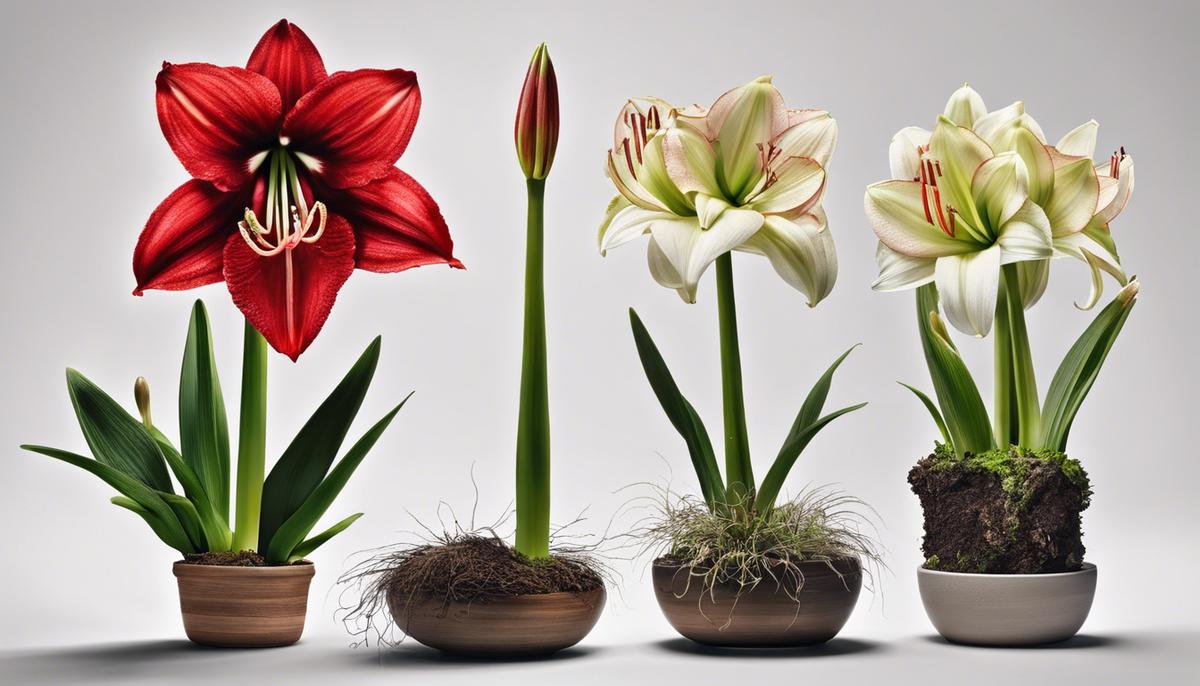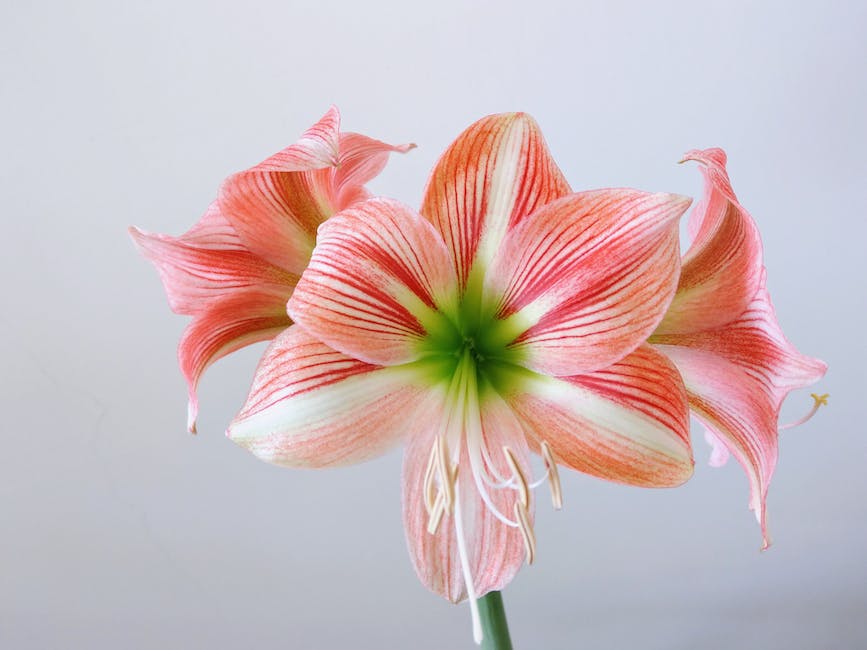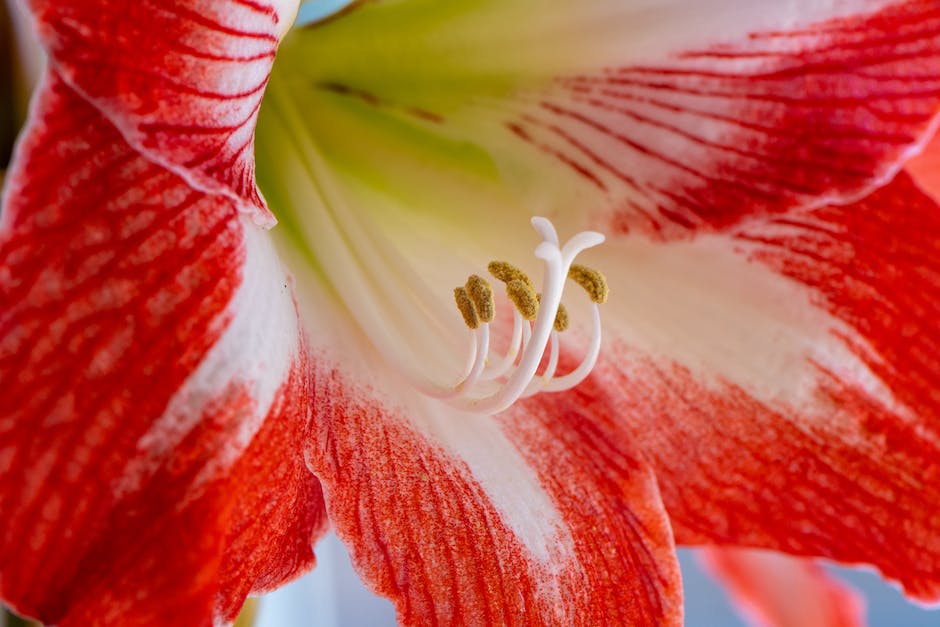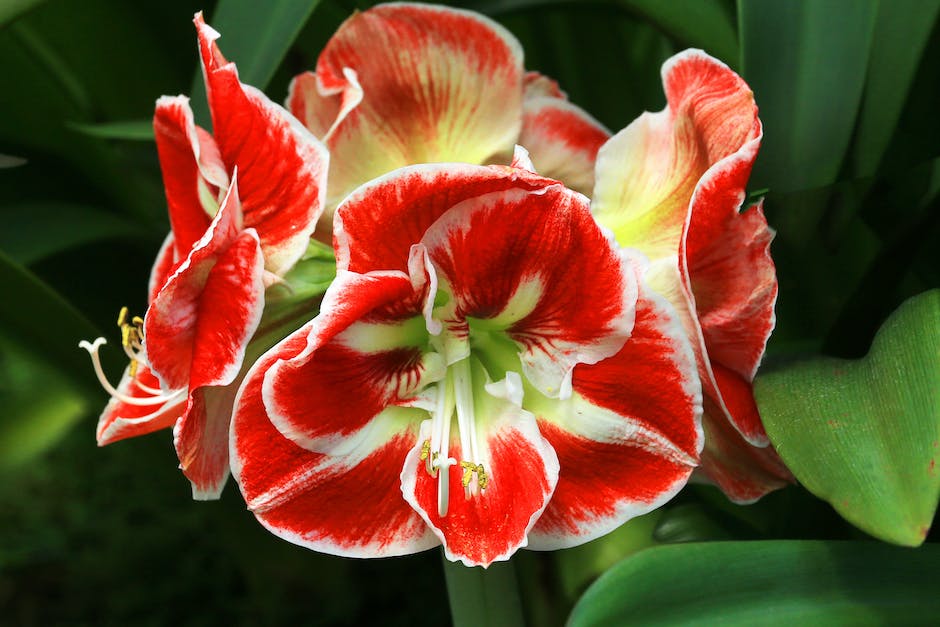Revive Your Amaryllis: Guide to Successful Rebloom

Few plants can match the resplendent beauty of an amaryllis in full bloom, but even fewer people know how to reliably induce that bloom for a spectacular repeat performance. Central to achieving this feat is a precise understanding of the life cycle of these exotic plants, knowing when they need to sleep and when they need to shine. In this guidance, we delve into the nitty-gritty of your amaryllis plant’s life cycle and offer essential insights for its care post-flowering to energize it for a promising rebloom. We’ll learn the techniques to successfully provoke your amaryllis into reflowering mode, manipulating environmental factors to optimize this natural cycle.
Understanding the Amaryllis Life Cycle
Hello there, fellow flower enthusiasts!
Of all the perennial flowering plants that are worthy of our admiration, the ever-lovely amaryllis takes a place of honor. This captivating beauty, with its lush foliage and blooming bright flowers, has won the hearts of many hobbyists over time.
With so many captivated by the grandeur of the amaryllis, it’s no surprise the life cycle of this brilliant plant becomes a topic of conversation. So, let’s dive into understanding the typical life cycle of an amaryllis and how it will influence its rebloom.
To start, what’s not commonly known is that the blooming stalk of the amaryllis pops up first, followed by the full-grown leaves. This stage of blooming is usually triggered by colder weather, which is why it’s a popular sight during the holiday season. After the flowers fade, the lush foliage remains and continues to grow.
At this point, it’s vital to remember that the leaves are critical to the reblooming process as they generate the energy stored in the bulb for the upcoming bloom cycle. This period could be compared to ‘charging’, with the foliage soaking up as much sunlight as it can to prepare for the next flowering season. Regular watering and feeding with a balanced fertilizer will be beneficial during this stage.
As summer wanes, the once vibrant leaves start to yellow, signifying the beginning of the dormant phase. At this stage, there’s no need for alarm! The amaryllis bulb requires a rest period before it can start the entire blooming process again. The yellowing of the leaves is a signal to reduce watering, eventually stopping altogether. The leaves will then dry up and can be removed.
During the dormancy period, the bulb needs to be stored in a cool, dark place between 10 to 13 weeks. It’s essential not to provide any water during this phase. This rest period is crucial for the amaryllis to rebloom.
Thereafter, when the rest period is over, the amaryllis bulb can be moved back into a well-lit location and watering can gradually resume. With this, the life cycle begins anew, and in six to eight weeks, you can expect to see a new bloom, creating a delightful spectacle that only the amaryllis can.
Understanding the typical life cycle of the amaryllis sheds light on the immense importance of each phase, from the vibrant blooming to the quiet dormancy period, in promoting successful reblooming. By providing the care needed at each stage, the amaryllis rewards steadfast enthusiasts with recurring displays of its breathtaking beauty. What an absolute joy it is to go on this floral journey with the amaryllis year after year!
Ultimately, the key to a successful rebloom lies in the gentle caress of patience and the watchful eye of a caring gardener. So, let’s tend to our amaryllis with knowledge, passion, and genuine care. We are, after all, the shepherds guiding them through their life cycle. Here’s to one full of blooming amaryllis and the joy it brings!

Proper Care After Flowering
Dealing with the Amaryllis Post-Flowering – A Blossoming Adventure Continues
Having emerged from a bulb, the amaryllis pilgrimage to a vibrant bloom is truly worth every moment of anticipation. However, the glory of its magnificent blossoming phase doesn’t end there, the real challenge lies in its post-flowering upkeep. It’s time to give the radiant amaryllis the attention it deserves to ensure longevity and repeated blooming pleasures.
Fading flowers beckon for their removal. Amaryllis enthusiasts need not fret if their sprightly flowers start fading and wilting, for this is simply the plant’s natural life cycle. What is essential is cautious trimming. Use clean, sharp scissors to remove spent flowers right down to the stem. Treating this fixture of the amaryllis plants with care after they’ve flowered helps preserve the plant’s energy for the important rest of the cycle.
Moreover, post-flowering requires high-level maintenance. This implies moving the plant to a sunny area to encourage the growth of leaves that help to collect and store enough energy for the next blossoming phase. The fade of one bloom is actually a hint of another bloom preparing to burst forth with the right care.
Continuing on this caring spree, retaining the leaves is vital. They might appear as ‘green invaders,’ taking up unnecessary space; yet, their conservation is the key to unlock potential blooming rounds. As part of the post-flowering care, nurturing the greener part comes on par with the scintillating blossoms.
Moreover, amaryllis, as diverse as it is, can be pretty thirsty, especially during the growth phase. Water it well but be wary of the waterlogged soil, lest the bulb should rot. The goal is to keep the soil slightly moist but well-drained for the bulb. There’s a fine line between a thirsty and drowning amaryllis. Finding that balance preserves the vitality of this beloved plant and staves off unwanted pests.
And just as humans thrive on a healthy diet, so too does the amaryllis benefit from fertilizer. However, it’s not enough to feed this spectacular plant only before and during blooming; it is just as crucial to nourish it in the post-flowering phase. Providing a balanced, water-soluble fertilizer, rich in phosphorus and potassium, about once every month aids in assuring the next cycle’s successful blossoming.
Overall, diligent care coupled with a keen understanding of the amaryllis post-flowering cycle begets a rich reward – the spectacle of the plant’s rebirth in full glory. Whether breastfed on the windowsill or basking in the outdoor sun, seeing this brilliant plant rebloom after proper post-flowering care is akin to watching a Phoenix rise from its ashes – something that is surely every gardener’s pride and joy. It reaffirms that the beauty of an amaryllis isn’t just in its bloom but within its entire life cycle. The satisfaction derived from nurturing an amaryllis to rebloom is in itself a hobbyist’s true mark of achievement.

Initiating Dormancy and Provoking Rebloom
Having shed a light on the ebbs and flows of the amaryllis life cycle, and the nurturing role that each gardener plays, let’s delve into some more detail on inducing dormancy and triggering that magical reblooming phase. Armed with these facts and guidelines, the journey to a thriving amaryllis is just on the horizon!
Staging a Good Exit — Timing the Dormancy:
Making a graceful transition into dormancy is crucial for the amaryllis. As the first fall chills roll in, it’s time to pull back on watering but not abruptly. Gradually lessen the water supply over a period of a few weeks, allowing the bulb to slowly adapt to the coming rest period.
Once the leaves start turning yellow, trim them back to around two inches from the top of the bulb. Resist the temptation to remove any green leaves at this point, they’re still channeling energy into the bulb.
Preparing for a Long Rest — The Dormancy Environment:
Once the leaves are trimmed, it’s time to find a cool and dark space to store the plant. A temperature range between 50-60°F is ideal during this rest period. An unheated basement or a chiller in the refrigerator (away from any fruit), can serve purposeful for this occasion.
Let the amaryllis remain in this restful slumber for at least 8-10 weeks. Patience is key during this period. Yes, it might seem odd to ‘ignore’ your plant, but remember, this phase is a normal part of the plant’s cycle and absolutely necessary for it to rejuvenate and rebloom.
Welcoming the Green Back — Exiting Dormancy:
Just like how the plant eased into dormancy, it has to be gently ushered out of it too. After 8-10 weeks, it’s time to relocate the plant to a warm location with indirect sunlight, increasing the temperature to around 70°F.
The rehydration process should be initiated carefully. Overwatering can lead to root rot, while underwatering might not coax the bulb out of dormancy. Begin with a small amount of water, and when new green growth is noticed, gradually increase it to the previous regular watering schedule.
The Return of the Scarlett Star — Triggering the Reblooming Process:
Once the amaryllis has awoken from its dormancy, deploying a high-phosphorus fertilizer, every 2-3 weeks, can stimulate and support blooming. Over the course of a few weeks, the amaryllis will reward your careful and patient care with another round of spectacular flowers.
Indeed, experiencing the rebloom of an amaryllis is an enchanting phase in your horticulture journey. It is a testament to your green thumb endeavors, a fulfillment of the hours of care and attention given, and a beacon of the entrancing beauty of nature. The process might require time and patience, but the end result, witnessing the rebloom of the amaryllis, will invariably reaffirm the proverb – the flower that blooms in adversity, is indeed the rarest and most beautiful of all.

The beautiful journey of nurturing an amaryllis to rebloom is replete with diligent care, deliberate actions, and rewarding outcomes. Equipped with clarity about the amaryllis life cycle and the right care techniques, you get to experience the inherent rhythm of nature right in your living space, watching a simple bulb transform into an explosion of color, rest briefly, and amazingly, repeat the process. When you embark on this journey and follow the steps judiciously, you can orchestrate the enchanting spectacle of an amaryllis rebloom season after season, bringing life-affirming brightness to your home.



